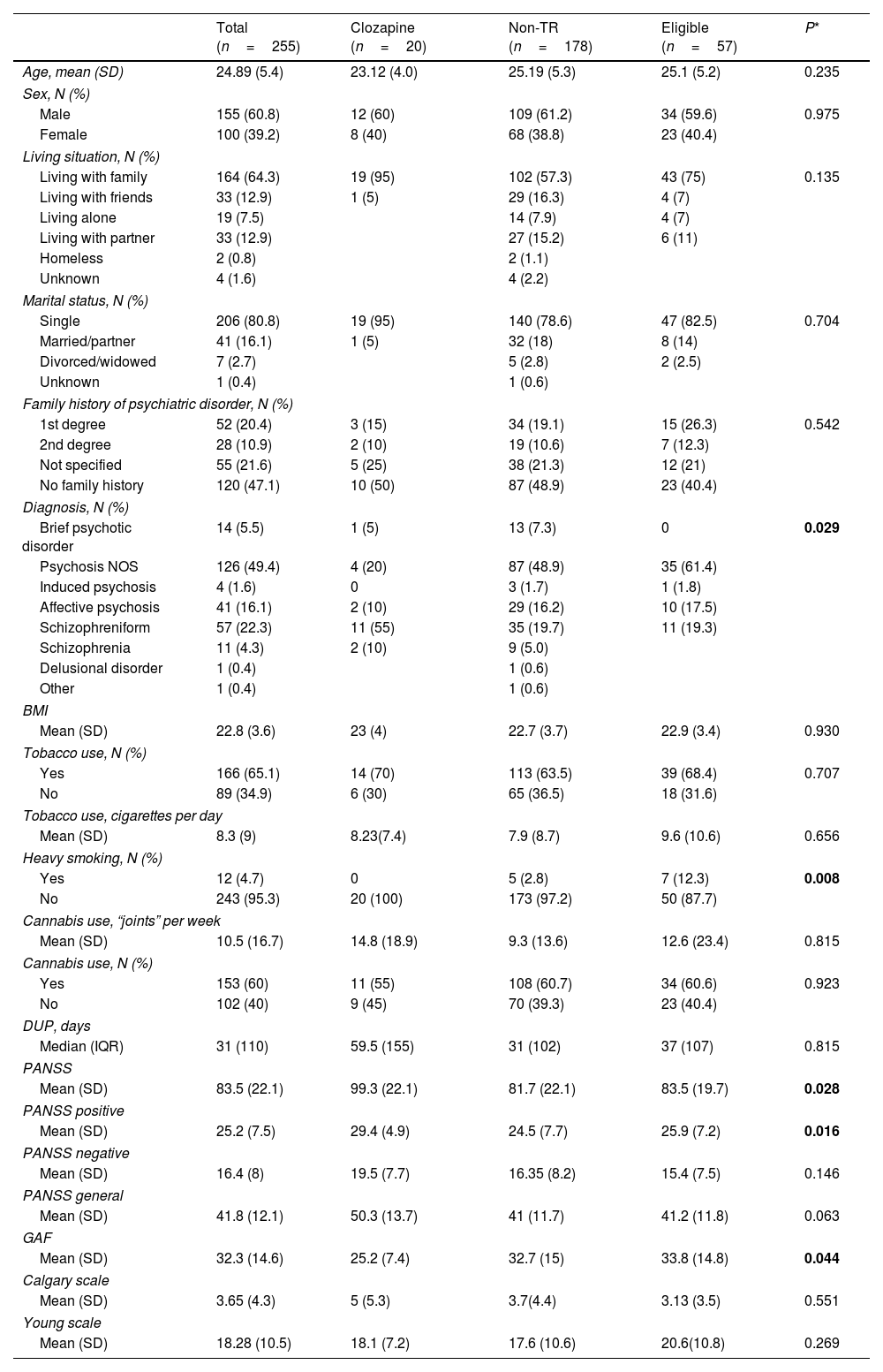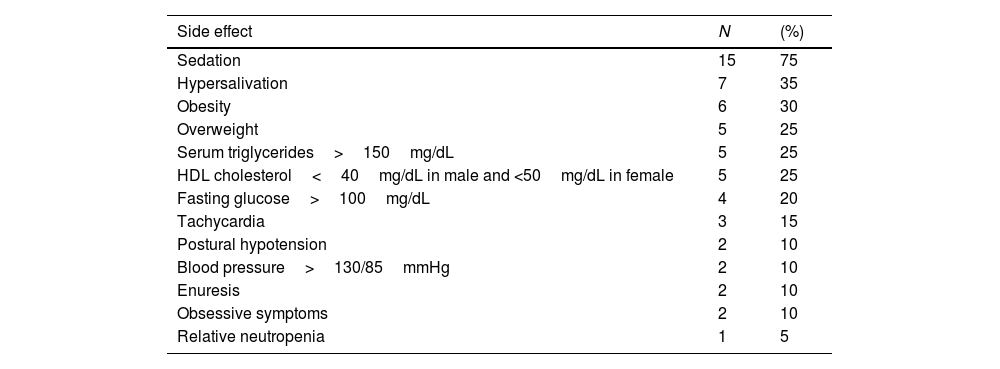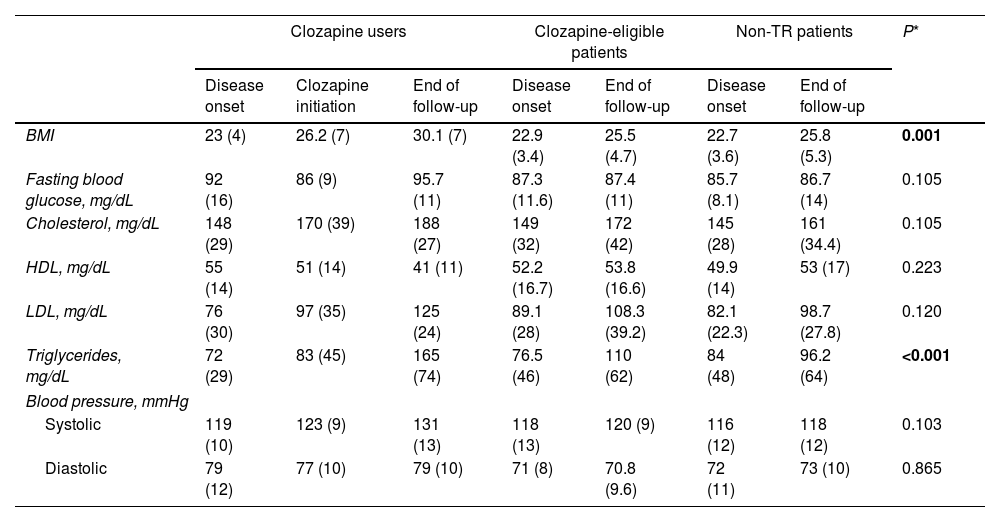Approximately 20–30% of patients with schizophrenia fail to respond to antipsychotic treatment and are considered treatment resistant (TR). Although clozapine is the treatment of choice in these patients, in real-world clinical settings, clinicians often delay clozapine initiation, especially in first-episode psychosis (FEP).
AimThe main aim of this study was to describe prescription patterns for clozapine in a sample of patients diagnosed with FEP and receiving specialized treatment at a university hospital. More specifically, we aimed to determine the following: (1) the proportion of patients who received clozapine within two years of disease onset, (2) baseline predictors of clozapine use, (3) time from starting the first antipsychotic to clozapine initiation, (4) concomitant medications, and (5) clozapine-related adverse effects.
MethodsAll patients admitted to a specialized FEP treatment unit at our hospital between April 2013 and July 2020 were included and followed for two years. The following variables were assessed: baseline sociodemographic characteristics; medications prescribed during follow-up; clozapine-related adverse effects; and baseline predictors of clozapine use. We classified the sample into three groups: clozapine users, clozapine-eligible, and non-treatment resistant (TR).
ResultsA total of 255 patients were consecutively included. Of these, 20 (7.8%) received clozapine, 57 (22.4%) were clozapine-eligible, and 178 (69.8%) were non-TR. The only significant variable associated with clozapine use at baseline was the Global Assessment of Functioning (GAF) score (R2=0.09, B=−0.07; OR=0.94; 95% CI: 0.88–0.99; p=0.019). The median time to clozapine initiation was 55.0 (93.3) days. The most common side effect was sedation.
ConclusionsA significant proportion (30.2%) of patients in this cohort were treatment resistant and eligible for clozapine. However, only 7.8% of the sample received clozapine, indicating that this medication was underprescribed. A lower baseline GAF score was associated with clozapine use within two years, suggesting that it could be used to facilitate the early identification of patients who will need treatment with clozapine, which could in turn improve treatment outcomes.











